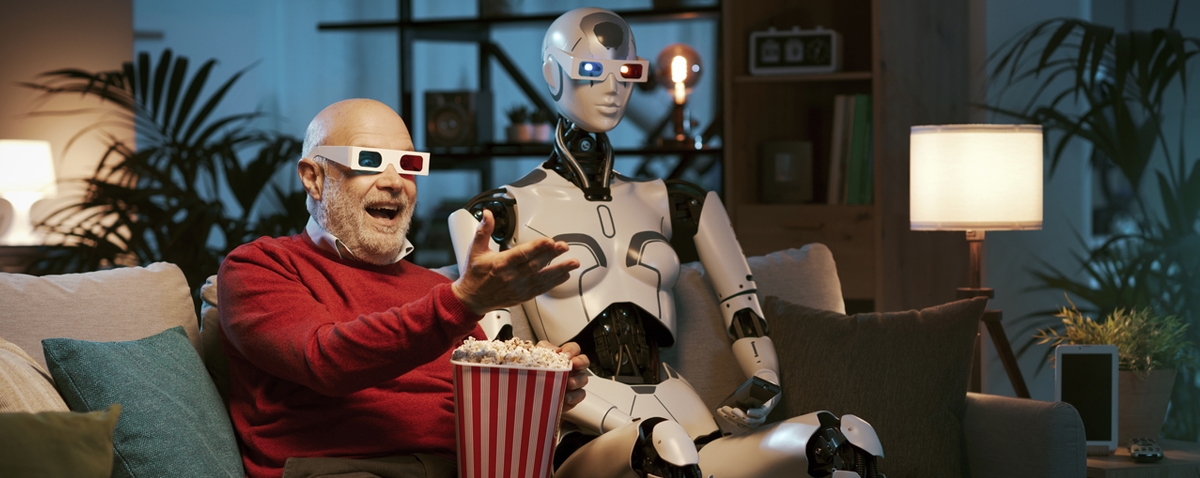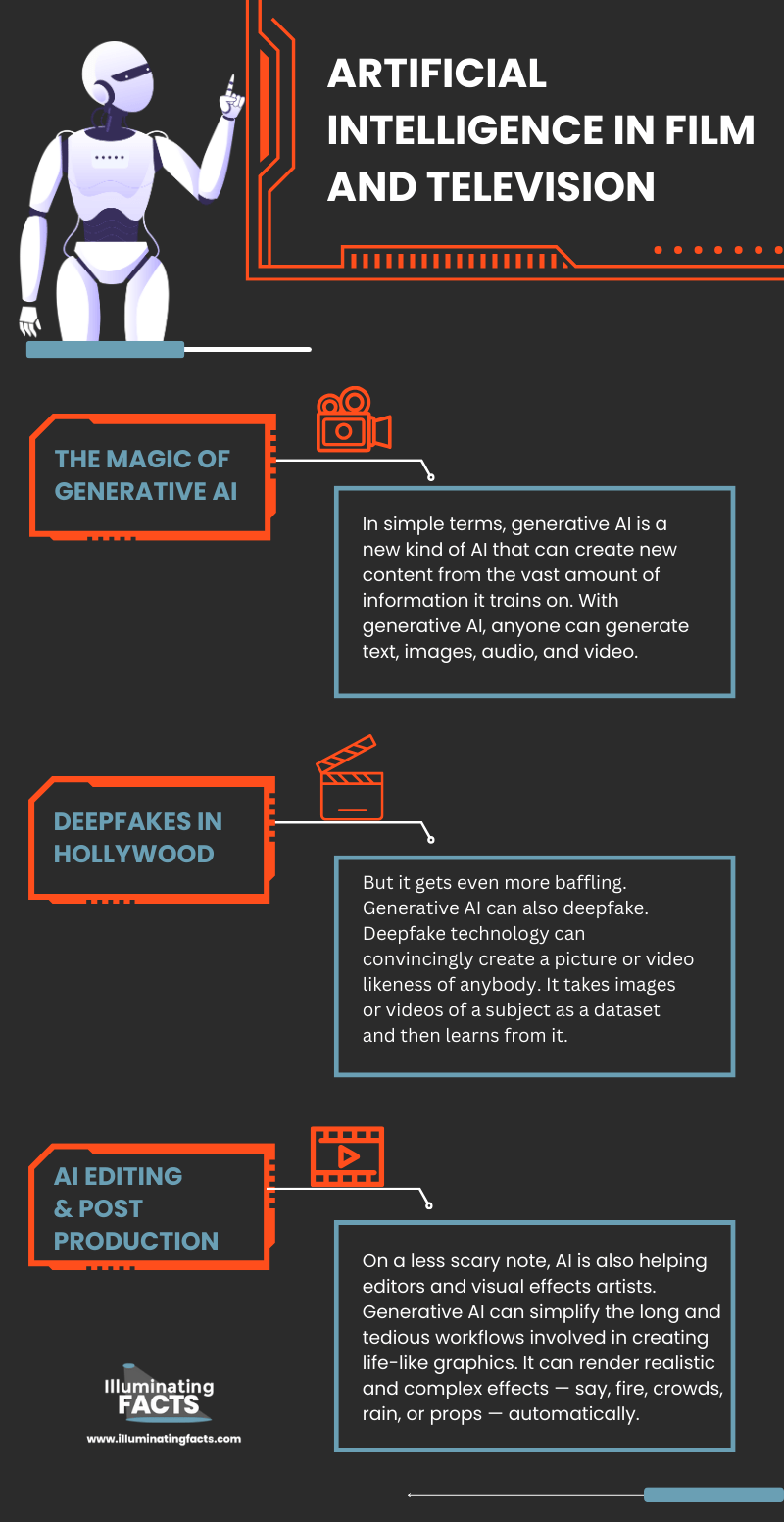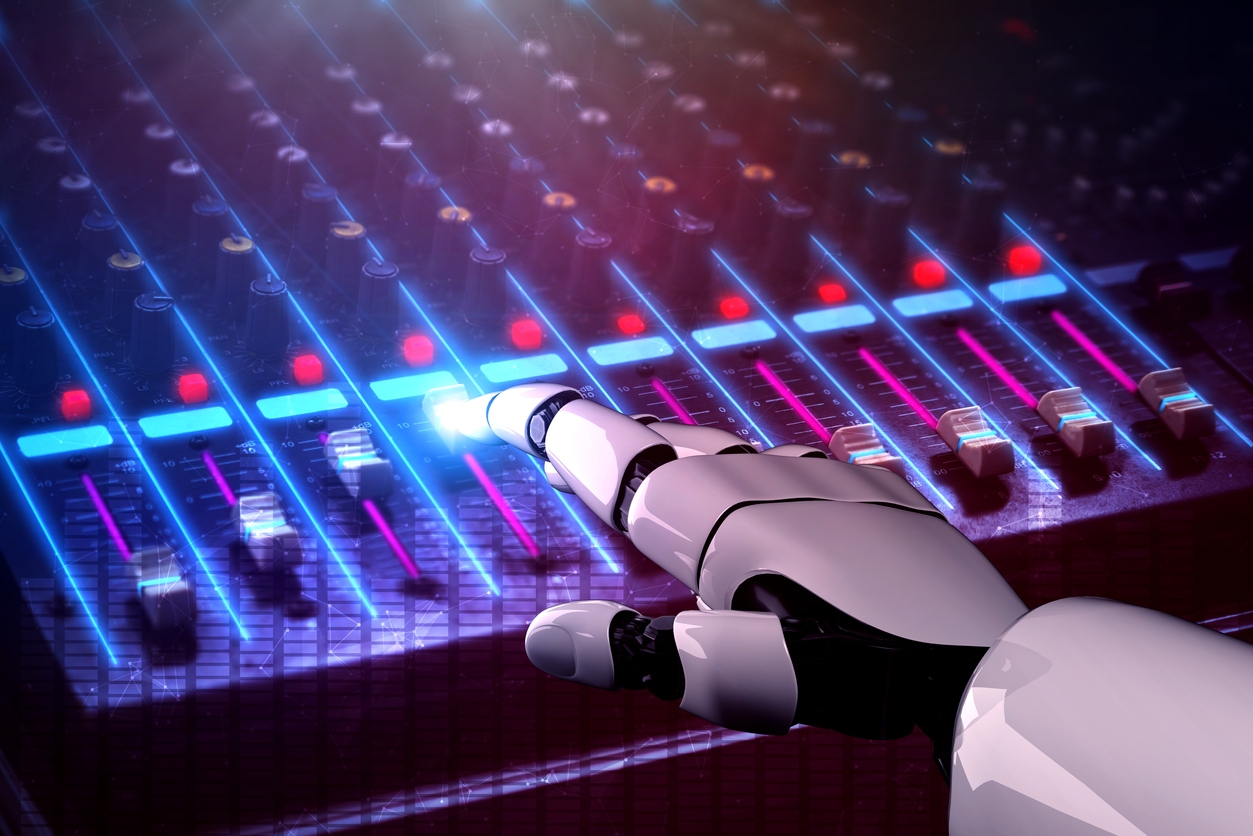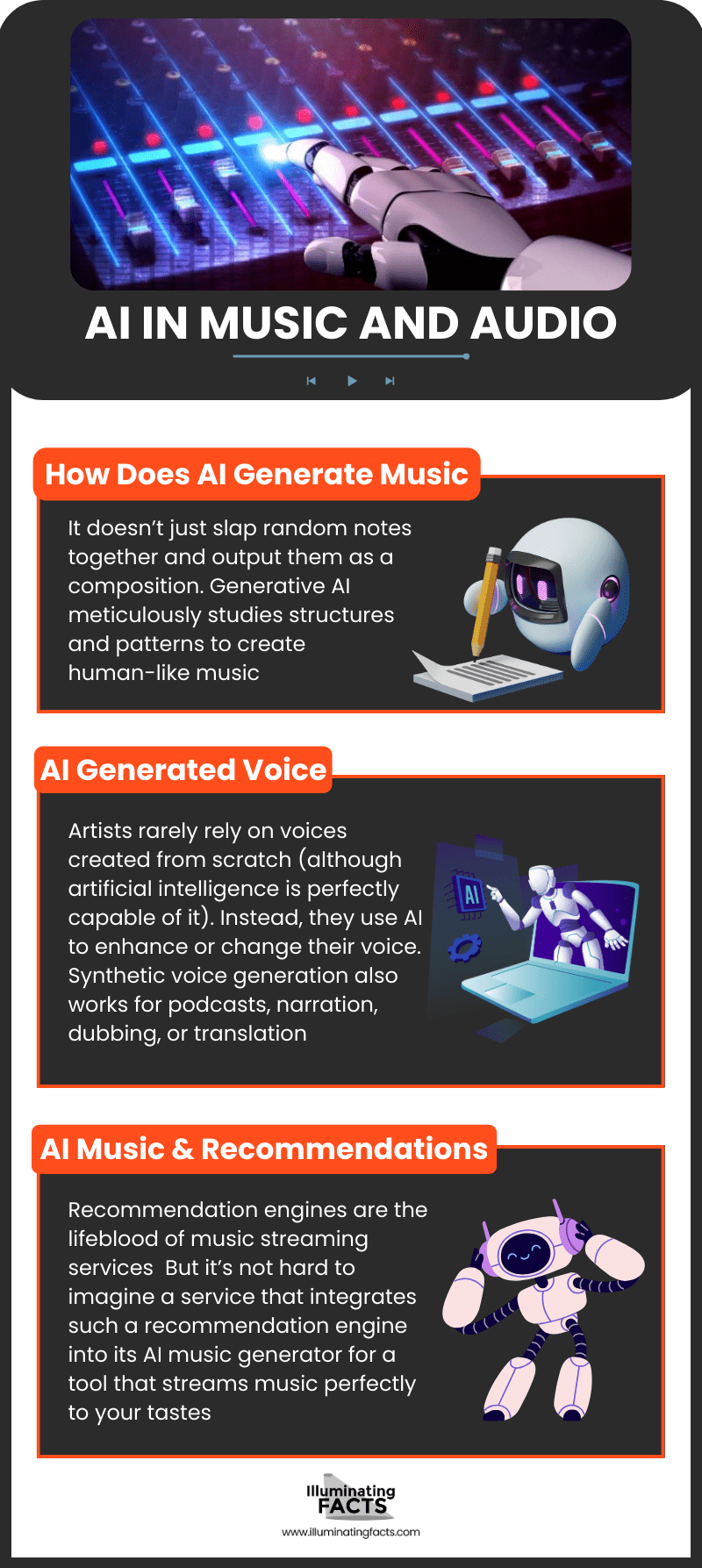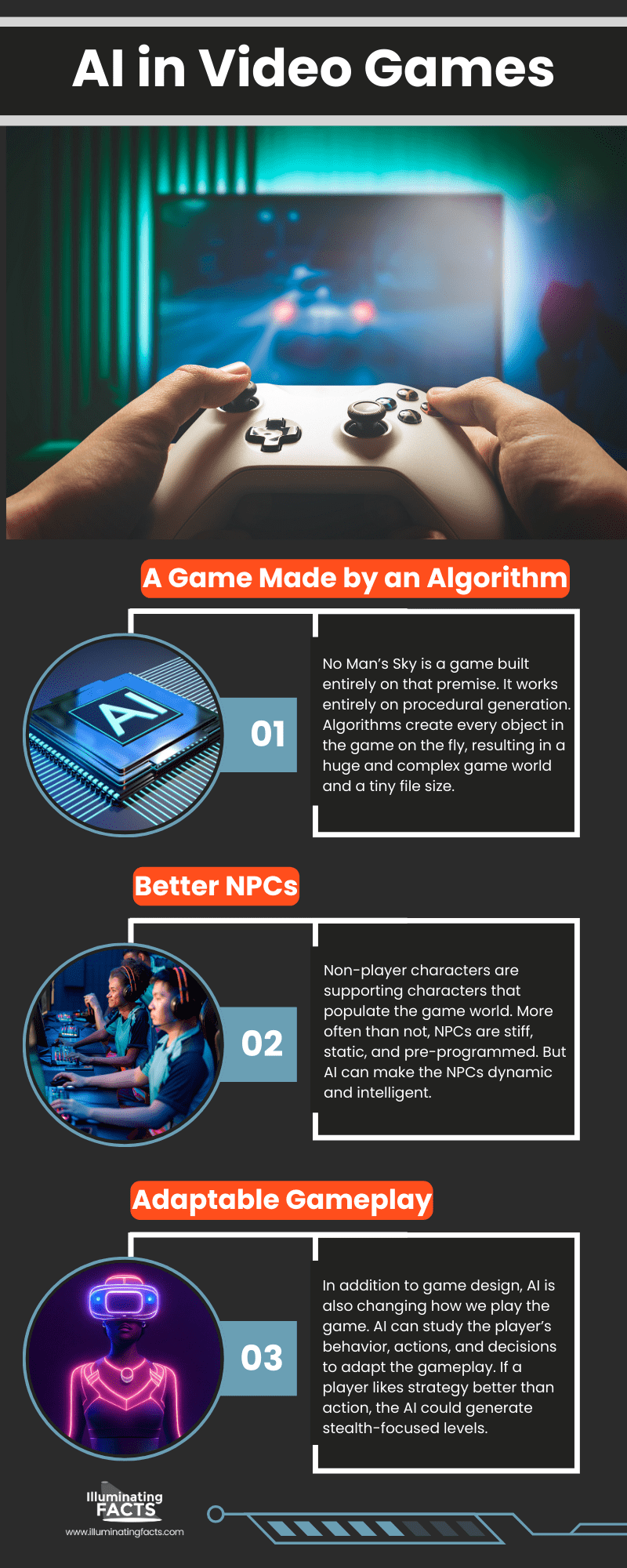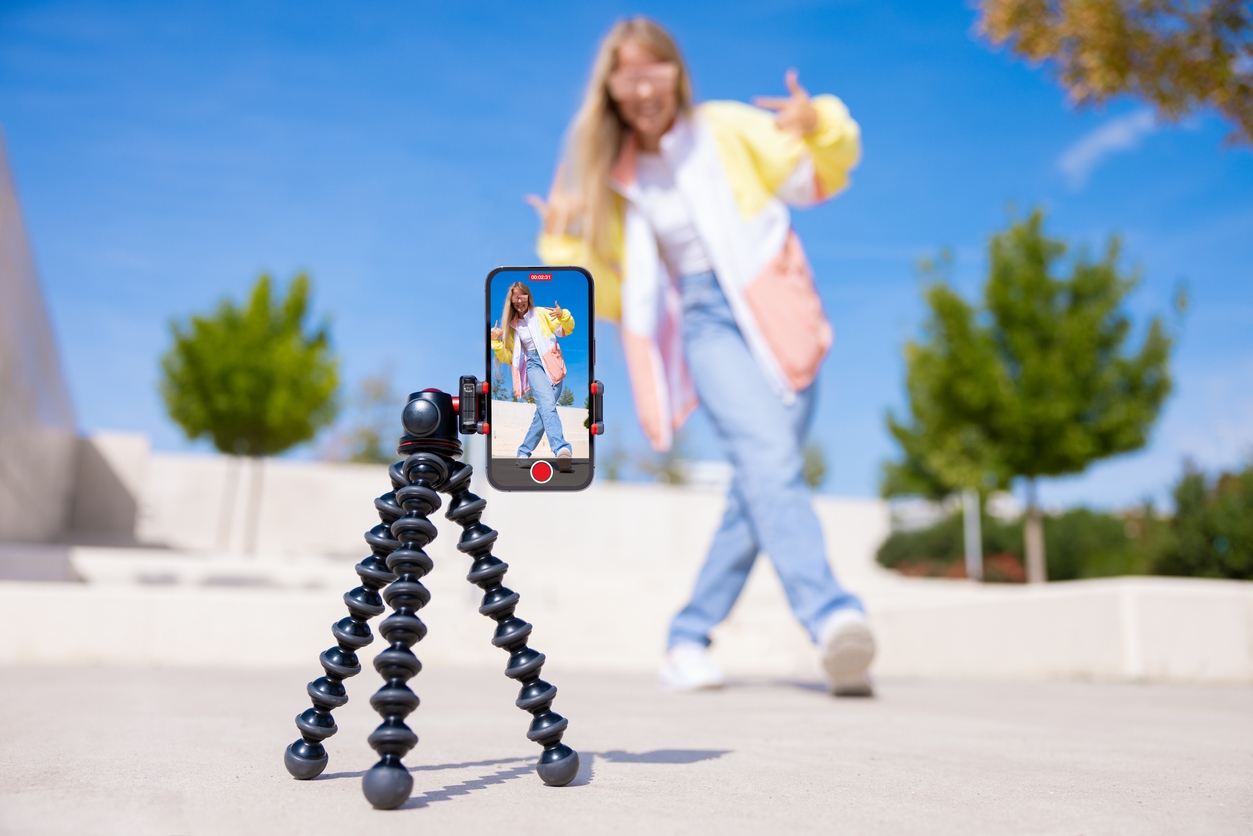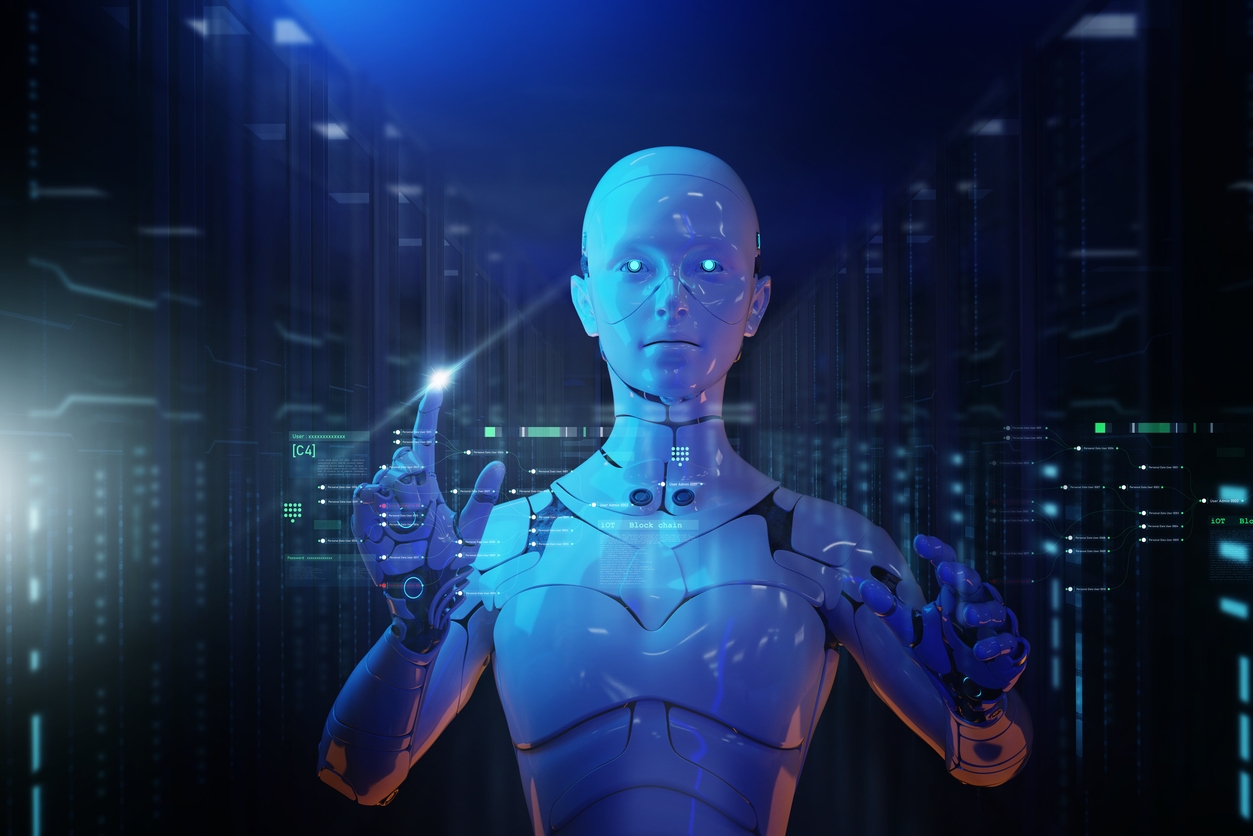The dawn of mass content production and consumption, enabled by AI, is here. AI is revolutionizing the sphere of entertainment, just as the industrial era brought us machine-powered mass production of physical goods. Creative endeavors were purely human domain once. But that is changing, and changing at a breakneck pace.
Machines writing and creating stories, scripts, and visuals on the fly are not the stuff of sci-fi anymore. We’re living through a remarkable time — watching a whole new reality unfolding on our screens. The industry is undergoing a massive shift — a shift that’s so pervasive and profound, we haven’t seen anything like it since the invention of television or the printing press.
And we’re going to take a deep dive into that reality. We’ll explore the creative powers of artificial intelligence. We’ll find that AI is no longer working behind the scenes, quietly recommending us movies and TV shows we might like. It has jumped up on the stage, actively shaping how we create and consume entertainment.
AI in Film and Television
You likely interact with AI regularly every day. When you’re watching YouTube or scrolling through Instagram reels, the videos seem perfectly tuned to your taste. That’s no accident. AI algorithms are hard at work behind the scenes, reading your preferences, history, and real-time feedback to suggest the next video with scary accuracy. It’s how Netflix or Spotify catches your attention.
Personalized recommendation engines are nothing new. They’ve been around a long time. [1] And although they’ve improved a great deal, there’s nothing ground-breaking about an AI that delivers personalized entertainment suggestions. No, cutting-edge AI is generative artificial intelligence.
The Magic of Generative AI
In simple terms, generative AI is a new kind of AI that can create new content from the vast amount of information it trains on. [2] With generative AI, anyone can generate text, images, audio, and video. Generative AI is powerful enough to create convincing poems, entire albums, paintings, and even working software — all with a quick description.
AI is generating content in every digital medium you can imagine — stories, films, television, games, music, and beyond. Some even combine the generative power with the recommendation engine we talked about to create media tailored to your unique preferences, on the fly. There are dedicated AI tools that can help you brainstorm for new narratives and characters. They can even write entire screenplays and character studies.
Deepfakes in Hollywood
But it gets even more baffling. Generative AI can also deepfake. Deepfake technology can convincingly create a picture or video likeness of anybody. It takes images or videos of a subject as a dataset and then learns from it. Once it has trained, it can realistically swap any face in an image with the subject. With the right resources and technical expertise, anyone can make someone say or do things they never said or did. It’s a frighteningly powerful technology.
And it’s far from embryonic. Hollywood is already employing deepfakes in modern films. In the movie “Gemini Man”, the filmmakers created a younger digital clone of Will Smith using deepfake technology. [3] It has even been used to bring back deceased actors for short cameos in their uncompleted projects. Ethically, it’s a conundrum. But with the current pace of deepfake advancements, we will likely be seeing a lot more of this technology in movies and TV.
AI Editing and Post Production
On a less scary note, AI is also helping editors and visual effects artists. Generative AI can simplify the long and tedious workflows involved in creating life-like graphics. It can render realistic and complex effects — say, fire, crowds, rain, or props — automatically.
AI in Music and Audio
Beyond film and television, AI is also creating new music, automating production, and personalizing listening experiences. Just like AI can generate synthetic images and videos by learning from a huge set of them, it can also feed on human-made compositions to create new music.
How Does AI Generate Music
It doesn’t just slap random notes together and output them as a composition. Generative AI meticulously studies structures and patterns to create human-like music. Sophisticated tools like Beatoven, Soundful, and SoundDraw can create surprisingly good compositions from simple text prompts or mood presets. [4]
Some AI music tools even let you add your own lyrics to the generated music and then intercut the music with synthetic vocals. Simply put, generative AI can synthesize and manipulate human voice and speech too. Voice synthesis works on the same principle as music generation.
AI Generated Voice
Artists rarely rely on voices created from scratch (although artificial intelligence is perfectly capable of it). Instead, they use AI to enhance or change their voice. Synthetic voice generation also works for podcasts, narration, dubbing, or translation.
Along a line similar to voice synthesis, AI also assists in sound analysis and optimization. AI tools can scan voiceovers or speech to improve audio quality or clean up artifacts.
AI Music and Recommendations
Recommendation engines are the lifeblood of music streaming services. It’s how Spotify creates those personalized playlists based on what you’ve listened to already. But it’s not hard to imagine a service that integrates such a recommendation engine into its AI music generator for a tool that streams music perfectly to your tastes.
AI in Video Games
AI is also influencing the video game industry, designing gameplay, developing assets, and creating more personalized and immersive experiences.
With generative AI, video game design is no longer static. AI algorithms can analyze your behavior and gameplay to adapt the game mechanics. Imagine procedurally generated environments or game levels tailored to the player’s preferences. It results in a seemingly endless variety and diversity of game elements and mechanics.
A Game Made by an Algorithm
No Man’s Sky is a game built entirely on that premise. It works entirely on procedural generation. Algorithms create every object in the game on the fly, resulting in a huge and complex game world and a tiny file size. No Man’s Sky generates unique explorable galaxies and planets, filled with generative terrains, biomes, animals, vegetation, weather patterns, tools, ships, and more. The world responds to the player’s actions and location. [5]
Better NPCs
Non-player characters are supporting characters that populate the game world. More often than not, NPCs are stiff, static, and pre-programmed. But AI can make the NPCs dynamic and intelligent. AI-powered NPCs are complex and add realism to the gameplay because they’re not predictable. They also interact with players realistically and immersively.
Adaptable Gameplay
In addition to game design, AI is also changing how we play the game. AI can study the player’s behavior, actions, and decisions to adapt the gameplay. If a player likes strategy better than action, the AI could generate stealth-focused levels. It could similarly adjust the difficulty level of the game based on the player’s performance.
AI is transforming the gaming industry from game design to development and personalization. Generative games are already here. And as AI evolves, it’ll become more popular.
AI in Content Creation
AI is also changing content creation by helping content creators understand their audience better, assisting in production, and sharing it with the right audience. It’s redefining possibilities for content creators and expanding their reach.
AI Drives Audience Outreach
For content creators, AI becomes an expert analyst. It essentially reads your audience’s mind, telling you exactly the sort of content they want to watch. The “mind reading” is accurate because the AI combs through viewing patterns, likes, shares, comments, and other metrics of engagement. Creators can then target the demographic with tailored content and get better traction and engagement.
With assistance from AI, creators can learn what their audience wants and tailor the content accordingly. But it doesn’t matter if they can’t get the content in front of the right people. That’s where AI drives content curation. It makes distribution personalized with behavior and activity analysis. The personalized approach boosts visibility since people get the content they’re likely to engage with.
AI Automates Boring Editing
Generative AI is automating video editing and production. Instead of hours of manual work, AI can automatically and quickly edit footage, sync audio, color grade, or add captions. Beyond basic editing, AI can also generate images and graphics from simple prompts. It can paint landscapes, design characters, and animate in a flash.
AI tools open up a realm of creativity, helping creators bring their ideas to life with ease. But that also comes with the risk of content becoming homogenized. Authenticity and originality take a hit in an AI-saturated landscape. When most of the work is automated by the same tools, it becomes a challenge to preserve the creator’s voice.
Some Concerns with AI
In order to deliver a personalized experience, AI systems collect a lot of personal and often sensitive data, raising privacy and security concerns. The data collection practices must be transparent and compliant.
Also, images and videos generated with AI are trained on human-made art. But those artists rarely grant permission or have the awareness that their art is being used to train AI systems. It raises ethical concerns. And the practice brings up issues of copyrights and royalties. Regulation is still catching up and lawmakers have a long way to go to ensure fair AI development and deployment.
Another problem with AI development is bias. Discrimination and biases creep into AI generations because these systems learn from publicly available data. Unless the data is thoroughly audited for biases, the AI systems learn from those biases too, which is eventually reflected in AI creations.
In the entertainment industry, AI is already displacing jobs. It’s being used for everything — from scriptwriting to post-production. For the past few months, Hollywood actors and writers have joined forces to go on strike against AI. [6] They demand that AI not replace or reduce any writing jobs. And that the writers should have the right to approve AI content. The Hollywood writer’s strike conveys an atmosphere of worry about job security in the industry.
AI Futurism
Looking to the future, AI is undeniably going to play a bigger role in the entertainment industry. The generative AI systems will evolve to become more sophisticated and creative, capable of producing more realistic content. It could potentially lead to entirely new and novel forms of entertainment — interactive movies or purely generative video games.
Virtual influencers and digital celebrities (characters created using generative AI) are already popular in online spaces like Twitch. They have their unique personas and following. [7] These AI-powered influencers are likely to gain more popularity soon and become more interactive.
AI will also integrate with other emerging technologies like augmented reality (AR) or virtual reality (VR). It’ll mark the start of a new era of technology, forever transforming how we create and consume entertainment.
Conclusion
We took a deep dive into the world of AI in the entertainment industry. We learned of the incredible power and impact AI has. And we saw how that power is reshaping the way entertainment is produced and distributed. AI is writing scripts, creating deepfake characters, producing music, making up voices, painting scenes, animating, designing, and generating almost infinite video game worlds.
AI is even driving content curation and audience targeting. By analyzing user data, AI systems can deliver personalized recommendations to boost engagement.
Despite all the possibilities, the rise of AI in entertainment comes with its unique challenges. Human jobs are being displaced. Regulation and law haven’t caught up with the rapid pace of AI progress. So there’s an atmosphere of uncertainty and worry around the whole subject. Regulating AI will become even more critical as the entertainment industry grows to rely more heavily on AI.
References
[1] Definition and History of Recommender Systems – Computer Science. (2020, November 3). BINUS International. Retrieved July 15, 2023, from https://international.binus.ac.id/computer-science/2020/11/03/definition-and-history-of-recommender-systems/
[2] Generative AI – What is it and How Does it Work? (n.d.). NVIDIA. Retrieved July 15, 2023, from https://www.nvidia.com/en-us/glossary/data-science/generative-ai/
[3] King, D. (2019, September 24). The Game-Changing Tech Behind ‘Young’ Will Smith in ‘Gemini Man’. WIRED. Retrieved July 15, 2023, from https://www.wired.com/story/game-changing-tech-gemini-man-will-smith/
[4] Forbes. Retrieved July 15, 2023 https://www.forbes.com/sites/ariannajohnson/article/the-best-free-ai-music-generators/?sh=47c666404ffb
[5] Procedural generation – No Man’s Sky Wiki. (n.d.). No Man’s Sky Wiki. Retrieved July 15, 2023, from https://nomanssky.fandom.com/wiki/Procedural_generation
[6] Why are Hollywood actors and writers on strike? (2023, July 14). Al Jazeera. Retrieved July 15, 2023, from https://www.aljazeera.com/news/2023/7/14/why-are-hollywood-actors-and-writers-on-strike
[7] Forbes. Retrieved July 15, 2023 https://www.forbes.com/sites/bernardmarr/2022/10/21/digital-pop-stars-virtual-influencers-and-the-future-of-music-and-celebrities-in-the-metaverse/?sh=40c8efc45b60

